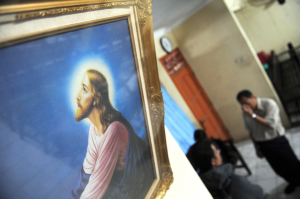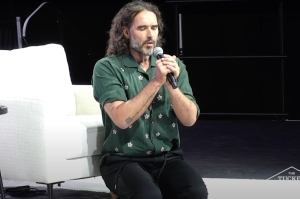'Ruby' Star Credits Success of New Reality Series to Addiction Issue
A new reality series that follows the weight-loss journey of a 500-lb woman drew record numbers when it premiered last week on The Style Network.
With over 545,000 views and a 0.66 rating, the premier of "Ruby" last Sunday became The Style Network's most-watched and highest-rated original series ever, according to officials.
"Ruby is truly an inspiration and we are delighted that Style viewers have embraced the series," said Salaam Coleman Smith, executive vice president of The Style Network, in a statement. "The response at mystyle.com has also been fantastic and many women are coming together to share their own stories as they follow Ruby's journey."
The prime-time series follows the journey of Ruby Gettinger, a Sunday school teacher from Savannah, Ga., who has diabetes, weighs around 470 lbs, and has been told by her family physician that she is a "metabolic time bomb waiting to go off."
"What I heard Dr. Corse tell me this week is that I'm going to die if I don't change," says Gettinger in the series premier. "That's pretty scary. If I don't do this, I'm going to die."
Though obesity today affects 60 million adults and the rate of new diabetes cases has nearly doubled in the United States in the past 10 years, Gettinger believes the show's success so far stems from more than the issue of obesity. She points out that the struggles she goes through are ones that any American who has or has had any sort of addiction can relate with.
"It's not only this battle with obesity," she says. "I think it's many other battles that we try all our lives to battle but never can."
To coincide with the premiere of "Ruby," The Style Network, which will be exclusively airing the series every Sunday night at 8 p.m. ET/PT, launched a robust and informative Web microsite, mystyle.com/ruby, devoted to Gettinger's weight-loss journey. It features additional show information and highlights, blogs and video blogs, behind-the-scenes interviews with Gettinger, and a message board on which visitors are able to communicate directly with Gettinger using postings.
And for Gettinger, the message board reveals why the show has been so popular.
"I feel like it's looking into a mirror. They (the visitors) feel like they are me. They feel like I'm telling their story. And that's how I feel when I read their stuff."
Whether it is drug addiction, alcoholism, homosexuality, or pornography addiction, Gettinger says she feels that everyone has a struggle. And it is those who are struggling that Gettinger has been reaching out to and hopes to inspire.
"I have this passion that I want to help other people. There's this passion that comes from my soul. I really want to conquer it so I can look at somebody in the eyes and say to them 'You can do this,'" she says.
"People have lost hope in [their struggle]. Just like how many times I've tried to conquer an addiction, I've felt it," Gettinger told The Christian Post on Friday. "You lose hope when you never beat something like this. You start thinking 'I'm never going beat this,' 'I'll always be this way,' 'There's nothing I can do about this.' Especially if you get to a place where your doctor tells you you're going to die and you go to a place where you're thinking 'Well, maybe I'm supposed to die because I can't beat this.'
"You should never go to a place like that," she adds. "But you do because when you fell as much as I fell at trying this, it's hard to believe again."
This time, however, things are different for Gettinger.
"I do believe in the impossible once again and I thank God for that," she says.
According to The Endocrine Society and The Hormone Foundation, obesity is the second leading cause of preventable death in the United States and affects 60 million adults. Furthermore, while 30.5 percent of U.S. adults are obese, an estimated 65.2 are considered overweight along with 15 percent of children.
The debut of "Ruby" comes as more health experts are highlighting the need to develop and deliver interventions that promote weight loss and increased physical activity among persons at high risk for diabetes to reduce diabetes incidence. Roughly 90 percent of new diabetes cases are Type 2 diabetes, the form linked to obesity.



























